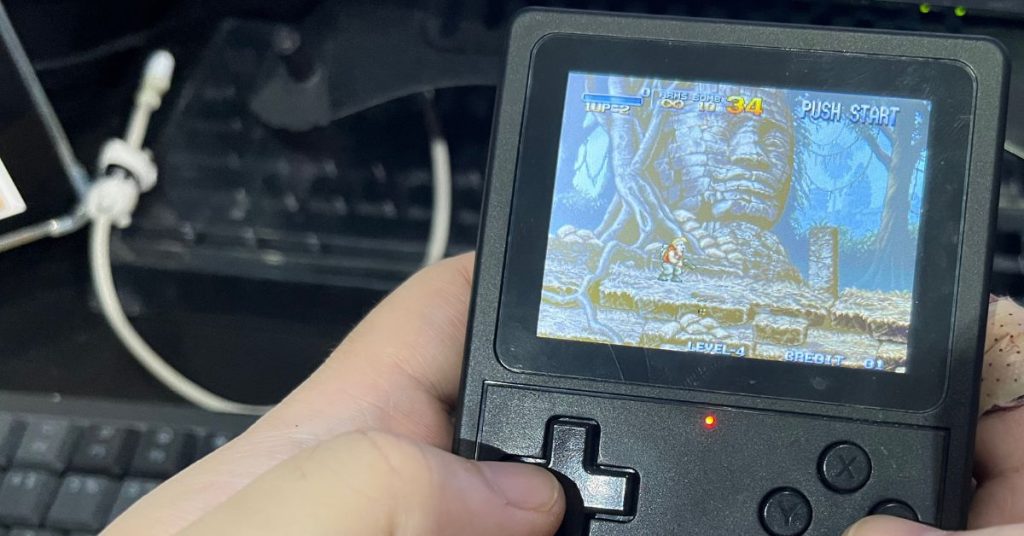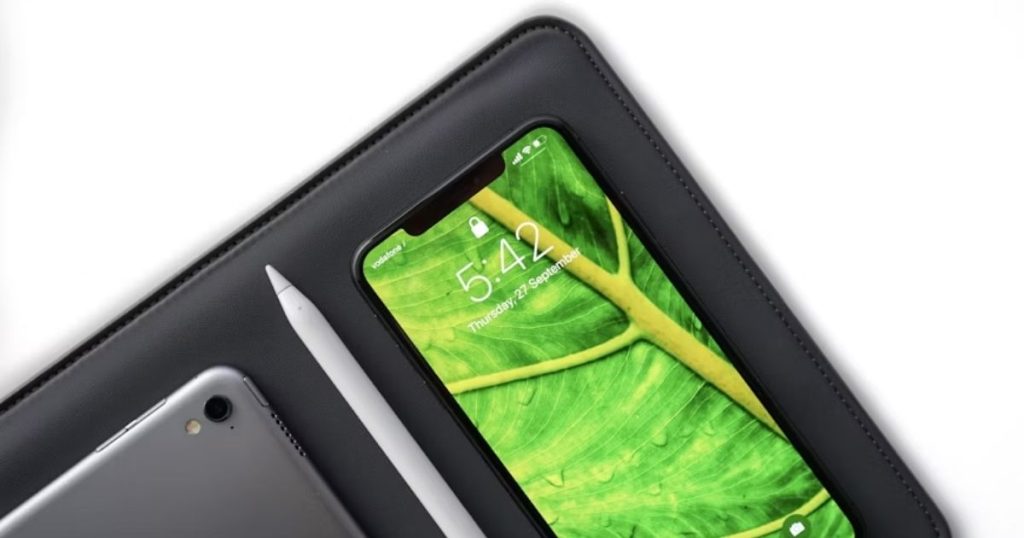Are teeth whitening gadgets actually worth the hype, or just clever marketing? Maybe you’ve seen flashy LED trays, whitening pens, or strips promising a Hollywood smile at home. With all these options, it’s easy to feel overwhelmed. In this article, we’ll walk through whether these gadgets work, how effective they really are, and what you should look for.
We’ll also spotlight the 10 best teeth whitening gadgets worth trying—based on real tests, expert opinions, and user results. By the end, you’ll know what works, what doesn’t, and which gadget could work best for you—no fancy jargon, just clear, honest info.
1. How Teeth Whitening Gadget Works?
Understanding how teeth whitening gadgets work can help you choose the right one and set realistic expectations. These gadgets rely on chemistry and, sometimes, a little light tech to break down the stains on your teeth. Here’s how it all works in simple terms:
1.1 Whitening Ingredients: The Real Power Behind the Brightness
The main job of a whitening gadget is to remove surface stains and lighten the color of your enamel. Most do this using active ingredients that bleach or gently polish away discoloration:
-
Hydrogen Peroxide (H₂O₂): This is the most common and powerful whitening agent used in both professional and at-home products. It breaks down into oxygen molecules, which then penetrate the enamel and break apart stains from things like coffee, wine, and tobacco.
-
Carbamide Peroxide: This is a gentler compound that breaks down into hydrogen peroxide when it comes into contact with water or saliva. It works more slowly but is effective, especially in leave-on products like trays or overnight kits. A 35% carbamide peroxide gel roughly equals about 12% hydrogen peroxide in strength.
-
PAP (Phthalimidoperoxycaproic Acid): A newer, non-peroxide option that whitens teeth without causing as much sensitivity. While it’s less studied, it’s growing in popularity, especially for people with sensitive teeth.
-
Other Non-Peroxide Agents: Some natural-based gadgets may use ingredients like baking soda, activated charcoal, or coconut oil. These work more like stain removers than actual whiteners and typically offer milder, surface-level results.
💡 Fun Fact: Most of the “whitening” you see isn’t just removing stains—it’s temporarily making the enamel appear brighter by dehydrating the teeth. That’s why some results fade after a few days unless you do multiple sessions.
1.2 Role of LED Light: Helpful or Hype?
You’ve probably seen many teeth whitening gadgets that include blue LED lights. But what does the light actually do?
-
The science: LED light doesn’t whiten teeth by itself. Instead, it helps accelerate the whitening process by energizing the peroxide molecules and making them break down stains faster. Think of it as a heatless catalyst.
-
Real-world results: Studies show LED light can speed up results, especially during a short treatment window (like 10–20 minutes). But if you’re using a weak gel, the light won’t make much of a difference. The magic is still in the gel.
-
Blue vs. Red LEDs: Some gadgets combine blue LED (to activate peroxide) with red LED light (thought to reduce inflammation or help with sensitivity). However, the benefits of red LED for teeth are still being studied.
🔎 Worth Knowing: Dentists use UV or laser lights in-office (which are stronger than LED) for faster and deeper whitening. At-home LEDs are lower power for safety—but they can still be effective over time with consistent use.
1.3 How Long Does It Take to See Results?
The timeline depends on the gadget and your starting shade:
-
Mild yellowing or surface stains: You could see noticeable results in 3–5 days with daily use of a good whitening strip or LED kit.
-
Deeper or older stains: It may take 2–3 weeks or longer, and you may need touch-ups.
-
Instant results? Some products claim this, but most of the change after one session is temporary (due to enamel dehydration) and fades within 24 hours.
2. Are At-Home Whitening Gadgets Safe & Effective?
The short answer? Yes—at-home teeth whitening gadgets can be safe and effective when used correctly. But like anything involving chemicals and your body, there are some important things to understand before jumping in.
2.1 How Safe Are These Gadgets?
Most at-home whitening gadgets are considered safe for general use—especially when they’re approved by dentists or regulated agencies like the FDA (in the U.S.) or CE (in Europe). They’re designed with lower concentrations of whitening agents compared to what you’d get at a dental clinic, which makes them safer for unsupervised use.
But “safe” doesn’t mean risk-free. Here are a few things to watch for:
-
Tooth Sensitivity: One of the most common side effects. Whitening agents can temporarily open up tiny pores in your enamel, making your teeth more sensitive to hot or cold foods.
-
Gum Irritation: If the gel touches your gums or lips, it might cause a mild burning or stinging feeling—especially if you’re using a poorly designed mouthpiece.
-
Overuse Risk: Using the product too often or for longer than directed can actually wear down your enamel or damage your gums over time.
👍 Safety Tip: Always follow the instructions exactly. Don’t leave the gel on longer than recommended, and don’t use it more frequently than the product advises—even if you’re eager for faster results.
2.2 Are They Actually Effective?
Yes—but not all teeth whitening gadgets deliver the same results. Some work very well, especially when they use dentist-approved formulas and come with LED lights to boost the process. Others are less effective, especially those using non-peroxide or overly diluted formulas.
Here’s what impacts effectiveness:
-
Active Ingredients: As mentioned earlier, hydrogen peroxide and carbamide peroxide are proven to work. Products with PAP or other alternatives may work more slowly or offer only surface-level whitening.
-
Usage Frequency: Whitening is a process, not a one-time miracle. Using your gadget consistently for 1–2 weeks is key. Most users start seeing results after 3–7 days with daily use.
-
Stain Type: Surface stains from coffee, wine, or smoking respond best to whitening. Deep internal stains (from medication or trauma) may not whiten much and usually require professional treatment.
💡 Quick Fact: A 2019 study published in the Journal of Applied Oral Science found that LED-activated at-home whitening kits containing 10% carbamide peroxide were effective in visibly lightening teeth in just 7 days—with minimal side effects.
2.3 Not a One-Size-Fits-All
Keep in mind, results vary based on your teeth’s natural shade, enamel thickness, and lifestyle habits (like smoking or drinking coffee). If your teeth are naturally darker or more stained, you may need longer or more intense treatment.
Also, whitening doesn’t work on crowns, veneers, or fillings—only on natural teeth. So, if you’ve had dental work done, expect uneven results unless you plan ahead with your dentist.
Safety vs. Effectiveness of Popular Teeth Whitening Gadgets
| Whitening Gadget Type | Main Ingredient/Method | Safety Rating 🛡️ | Effectiveness Rating ✨ | Best For |
|---|---|---|---|---|
| LED Whitening Kits | Hydrogen or Carbamide Peroxide | ⭐⭐⭐⭐☆ (safe with proper use) | ⭐⭐⭐⭐☆ | Moderate to deep stains, gradual whitening |
| Whitening Strips | Hydrogen Peroxide | ⭐⭐⭐⭐☆ | ⭐⭐⭐⭐☆ | Surface stains, beginners |
| Whitening Pens | Low-dose Peroxide or PAP | ⭐⭐⭐⭐⭐ | ⭐⭐☆☆☆ | Touch-ups, travel-friendly maintenance |
| Whitening Toothpaste | Abrasives, no peroxide | ⭐⭐⭐⭐⭐ | ⭐⭐☆☆☆ | Daily maintenance, minor surface stain removal |
| PAP Whitening Kits (non-peroxide) | PAP (Phthalimidoperoxycaproic acid) | ⭐⭐⭐⭐⭐ | ⭐⭐⭐☆☆ | Sensitive teeth, peroxide-free users |
| Charcoal Powders & Pastes | Activated charcoal (abrasive) | ⭐⭐☆☆☆ (can erode enamel) | ⭐☆☆☆☆ | Occasional use only; not for long-term whitening |
| UV-Enhanced Whitening Devices | Hydrogen Peroxide + UV light | ⭐⭐⭐☆ | ⭐⭐⭐⭐☆ | Faster results (use caution for sensitivity) |
🔍 Legend:
-
⭐⭐⭐⭐⭐ = Excellent
-
⭐⭐⭐☆ = Moderate
-
⭐☆☆☆☆ = Low or minimal
💬 Expert Quotes to Back It Up
Here are a few credible insights from dental professionals and researchers that you can sprinkle into your article or quote directly:
“At-home whitening systems can be very effective, especially those containing carbamide peroxide or hydrogen peroxide. The key is to use them consistently and follow the instructions carefully.”
— Dr. Ada S. Cooper, DDS, spokesperson for the American Dental Association (ADA)
Source: https://www.ada.org/resources/research/science-and-research-institute/oral-health-topics/tooth-whitening
“LED technology is not the whitening agent itself. Instead, it enhances the performance of the peroxide or PAP gel by accelerating the chemical reaction. Think of it like adding a turbo booster.”
— Dr. Hani Halim, Cosmetic Dentist and Clinical Lecturer
“Peroxide-free formulas are great for people with sensitivity, but they tend to work slower and don’t produce the same deep whitening effects as traditional peroxide systems.”
— Dr. Christine Frank, Dental Health Expert
Source: https://www.healthline.com/health/dental-and-oral-health/teeth-whitening
3. The Top 10 Teeth Whitening Gadgets You Should Try
We’ve picked the top 10 gadgets based on performance, expert endorsement, and user satisfaction. Orders reflect overall value and results.
1. Crest 3D Whitestrips Professional Effects

-
Type: Strips with hydrogen peroxide
-
Strengths: Strong whitening power, ADA seal, trusted brand
-
Why it works: Clinically tested; whitening in 1–2 weeks.
-
Usage: Peel-on daily for ~30 min, 1–2 weeks
-
Considerations: Mild gum sensitivity
2. Denjoy Portable LED Whitening Unit
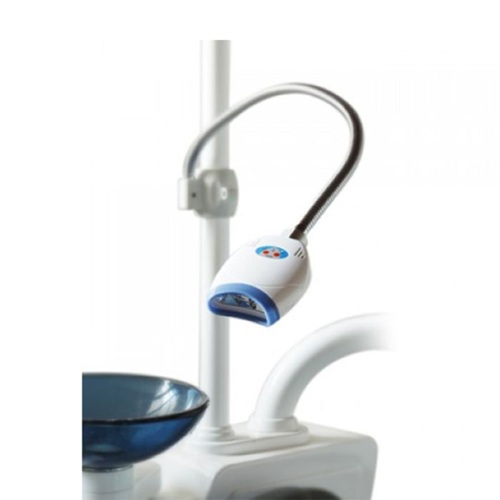
-
Type: LED tray + gel (sold separately)
-
Strengths: Portable, rechargeable, kit-style power
-
Why it works: LED helps set gel; gel potency key.
3. Pro Dental LED Bleaching Lamp
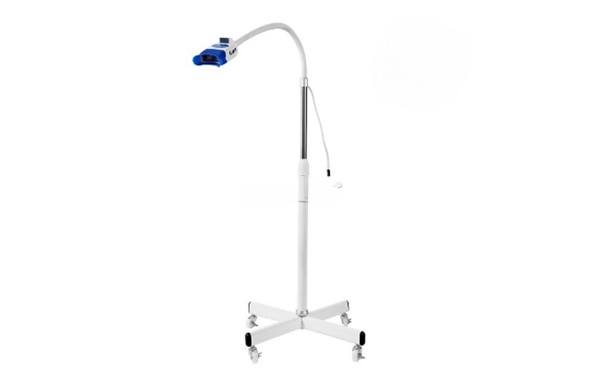
-
Type: Stand-up LED lamp for tray use
-
Strengths: Professional look, strong output
-
Why it works: Light boosts peroxide efficacy in practice.
4. Perfect Smile Whitening Pen (4 ml)

-
Type: Gel pen (~35% carbamide peroxide)
-
Strengths: Handy, quick touch-ups
-
Why it works: Frequent targeted application yields results.
-
Tip: A quick solution for stubborn spots
5. Snow Diamond/Snow Teeth Whitening Kit (LED kit)
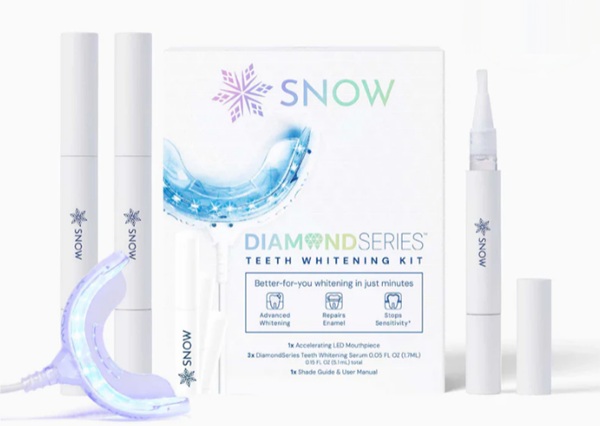
-
Type: LED mouthpiece + hydroxyapatite gel
-
Why it works: Less harsh on sensitive teeth, noticeable brightening after first use.
-
Best for: Sensitive teeth users
6. Crest 3D Whitestrips Sensitive + LED

-
Type: Lower-peroxide strips (5.25%) + LED
-
Why it works: Gentler formula, same trusted brand; two-shade improvement in ~5 days.
-
Best for: Mild sensitivity
7. Opalescence Go 15% Pre-Filled Trays
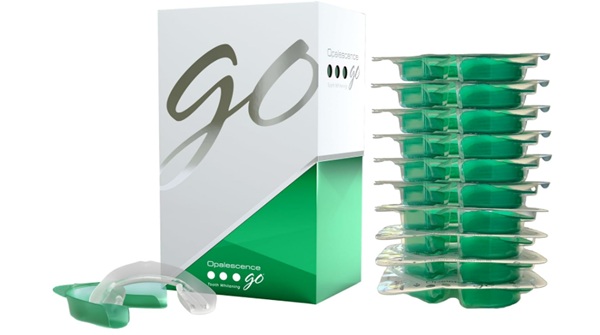
-
Type: Disposable gel trays (15% hydrogen peroxide)
-
Why it works: Professional-style gel, easy to use, clinical endorsements.
-
Best for: Mess-free and effective whitening
8. Cali White LED Kit
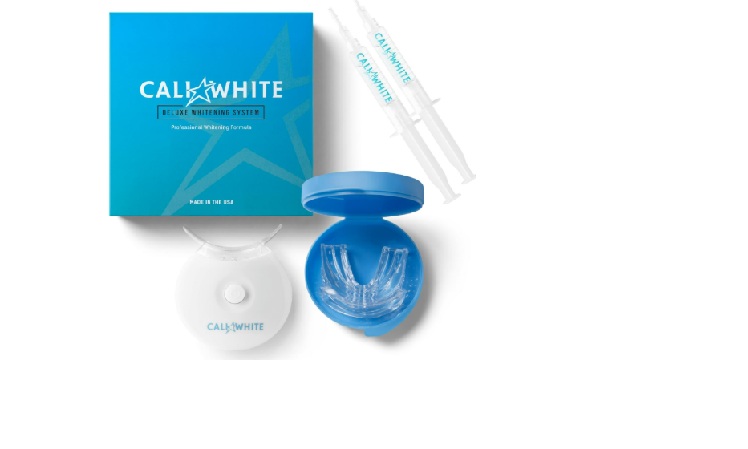
-
Type: Gel + LED mouthpiece
-
Why it works: Fast (~10 min sessions), two shades lighter per tests.
-
Budget-friendly: Around USD 20
9. AuraGlow LED Kit
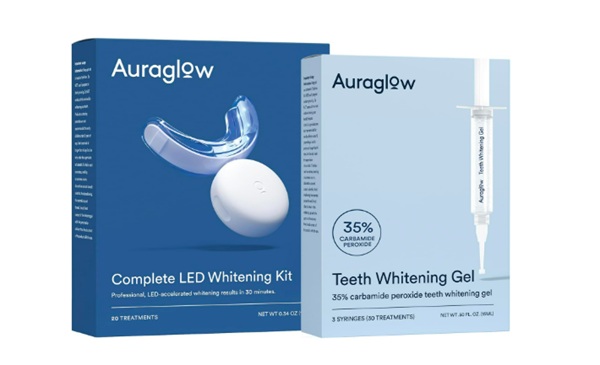
-
Type: LED tray + 35% carbamide peroxide
-
Why it works: Editor-favorite for tough stains; one use shows effect.
-
Best for: Deep discoloration
10. Moon The Teeth Whitening Device System
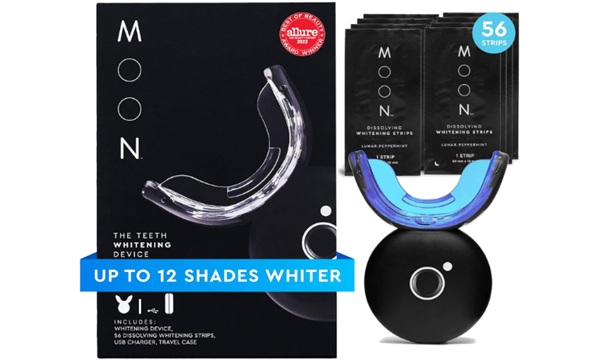
-
Type: LED tray+serum (~9% peroxide)
-
Why it works: Trusted overall pick from Vogue; balanced strength.
4. Quick Comparison Table
| Gadget | Type & Strength | Ideal For | Notable Benefit |
|---|---|---|---|
| Crest Pro Whitestrips | Strips, HP peroxide | Step-up from regular strips | Highly effective |
| Denjoy LED Portable Unit | LED tray | On‑the‑go users | Rechargeable, strong delivery |
| Pro Dental LED Lamp | LED lamp | Serious at‑home users | Professional-level experience |
| Perfect Smile Whitening Pen | Carbamide pen | Spot whitening | Convenient & precise |
| Snow Diamond Kit | LED + hydroxyapatite | Sensitive teeth | Gentle & quick improvement |
| Crest Sensitive + LED | Strips (5.25%) + LED | Mild sensitivity users | Efficient yet gentle |
| Opalescence Go Pre-Filled | 15% HP trays | Mess-free whitening | Clinic-level efficacy |
| Cali White LED Kit | LED tray | Budget shoppers | Fast results on a budget |
| AuraGlow LED Kit | LED tray | Heavy stains | Strong peroxide for deep cleaning |
| Moon LED Device System | LED tray | Balanced whitening | Reliable and moderate formula |
5. Tips for Picking & Using a Whitening Gadget
Choosing the right teeth whitening gadget isn’t just about what looks trendy—it’s about what works for your needs, lifestyle, and teeth sensitivity. These gadgets vary in strength, format, and results. Whether you’re looking for quick touch-ups or a full-on whitening treatment, keep the following tips in mind:
-
Check the peroxide percentage
-
Hydrogen peroxide (HP) and carbamide peroxide (CP) are the main ingredients that whiten teeth.
-
HP is stronger and acts faster (typical concentration: 6% to 10%), while CP is more stable and slower-acting (converts to ~35% CP = 12% HP).
-
For noticeable results, aim for 10–35% CP or 6–10% HP, but start low if you’re new to whitening.
-
Note: Avoid unregulated products with very high peroxide content—they can damage enamel and gums.
-
-
Sensitive teeth? Choose gentle formulas
-
If you already deal with tooth or gum sensitivity, opt for lower peroxide levels or peroxide-free products like PAP (phthalimidoperoxycaproic acid), which gently breaks down stains.
-
Some whitening gadgets also contain soothing ingredients like potassium nitrate, aloe vera, or hydroxyapatite to reduce discomfort.
-
-
LED light may help—but it’s not magic
-
Many whitening gadgets advertise LED light technology, claiming faster or deeper whitening.
-
While studies show LED can enhance the chemical reaction, it’s not the main whitening agent—the gel is still doing most of the work.
-
Think of LED as a performance booster, especially helpful for those using lower peroxide levels.
-
-
Always follow instructions to avoid side effects
-
Overusing whitening gadgets—especially multiple times a day—can lead to gum burns, enamel erosion, and increased sensitivity.
-
Stick to the recommended usage time (usually 10–30 minutes), and don’t use them more than once a day unless directed by a dentist.
-
Rinse your mouth well after each session and avoid staining foods (coffee, red wine, curry) for at least an hour after whitening.
-
-
Consult your dentist if you have crowns, fillings, or veneers
-
Whitening agents won’t change the color of dental restorations. This could leave you with uneven shades if your natural teeth whiten but your dental work doesn’t.
-
A dentist can advise whether professional whitening or a replacement might be needed to keep everything matching.
-
-
Know your whitening goals
-
Are you looking for a full-bright smile transformation or just subtle maintenance?
-
Pens and strips are great for small touch-ups and travel. LED kits are better for deep whitening over time.
-
Also consider how much effort you’re willing to put in—some systems are daily routines, others are once a week.
-
6. My Take: Which Gadget Should You Choose?
Let’s be honest—there’s no one-size-fits-all answer when it comes to picking the perfect teeth whitening gadget. Your ideal choice depends on things like your budget, how quickly you want results, whether your teeth are sensitive, and how much effort you’re willing to put in. So, instead of just picking the “most popular” option, it’s better to match the gadget to your lifestyle.
Here’s my breakdown to help you figure out the best fit:
If You’re New to Whitening
Start with: Whitening strips or a peroxide-free LED kit (with PAP)
-
These are gentle, affordable, and low-risk.
-
Brands like Crest Whitestrips or SNOW’s PAP-based LED kits are perfect for beginners.
-
You’ll get visible results in a week without overcomplicating your routine.
If You Have Sensitive Teeth
Go for: PAP whitening kits or low-concentration carbamide peroxide kits
-
Avoid anything with high hydrogen peroxide (over 10%) to prevent stinging or enamel irritation.
-
Look for options that include soothing ingredients like potassium nitrate, aloe vera, or hydroxyapatite.
-
Brands like Hismile (PAP+ formula) are specifically designed with sensitivity in mind.
If You Want Fast Results
Choose: High-powered LED kits with 6–10% hydrogen peroxide
-
These can whiten teeth 2–3 shades in under a week.
-
Try something like the GLO Science Brilliant Personal Teeth Whitening Device or the AuraGlow LED kit.
-
Keep in mind: Fast results usually come with higher sensitivity—don’t overuse them!
If You Travel or Need Quick Touch-Ups
Use: Whitening pens or portable LED gadgets
-
Pens are compact and easy to apply after meals, coffee, or wine.
-
While they won’t drastically whiten, they help maintain results between treatments.
-
Some pens like Colgate Optic White Lasting Pen dry quickly and can be used anywhere.
If You’re On a Budget
Stick to: Whitening toothpaste + strips combo
-
Whitening toothpaste won’t change your tooth color drastically, but it helps maintain results and remove surface stains.
-
Combine it with a trusted strip brand like Crest 3D White for affordable, reliable results.
Personalization Is Key
If you’re looking for dramatic, long-lasting results, invest in a high-quality LED whitening kit with proven peroxide formulas. But if you’re someone who just wants a brighter smile without the fuss—or if you deal with sensitivity—there are still plenty of gentler and more affordable options. The best teeth whitening gadget is the one that fits into your life without causing discomfort or breaking the bank.
Conclusion
Yes, teeth whitening gadgets can work—really well!
The most effective gadgets use peroxide (hydrogen or carbamide). Clinical data support peroxide as the best whitening agent. Adding LED may speed things up, though results depend mostly on the gel and concentration. With correct usage and reasonable expectations, at-home gadgets offer a solid and safe whitening option.
Choose a gadget that fits your needs and comfort: strong peroxide for fast results, gentle formulas for sensitivity, or convenient pens for spot fixes. Just always follow directions and keep your dentist in the loop—especially if you have dental work or chronic sensitivity. Happy brightening!


